
As tumors advance they become more poorly differentiated. This results in a higher rate of incomplete cell cycle replication (dysregulated replication), higher tumor burden, and a higher rate of cell growth. All three of these factors increase TK1 levels substantially. Further, since inflammation is a functional part of tumor metastasis, cCRP also increases. Together, they are useful tools for monitoring therapy efficacy and disease recurrence.
Look at the graphs below to see how trends indicate patient status.
black line= TK1 (proliferation) | red line= CRP (inflammation)
Response to Therapy
Changing TK1 and CRP values indicate response to therapy.
Graphs represent the use of monitoring in canine patients. Feline patients use HPT in place of CRP. All situations are valid in both cats and dogs.
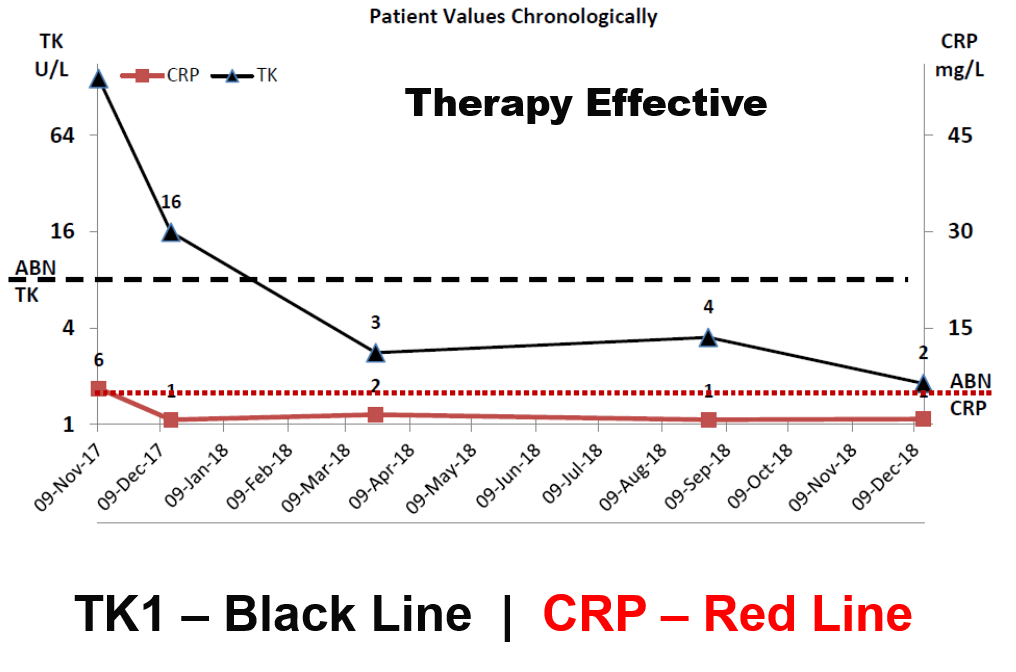
Following both TK1 and CRP during therapy documents effectiveness. In the case of chemotherapy TK1 will gradually decline as tumor burden declines. In cases of surgical tumor removal, TK1 will decline immediately. In both cases, CRP will decline if therapy is effective.
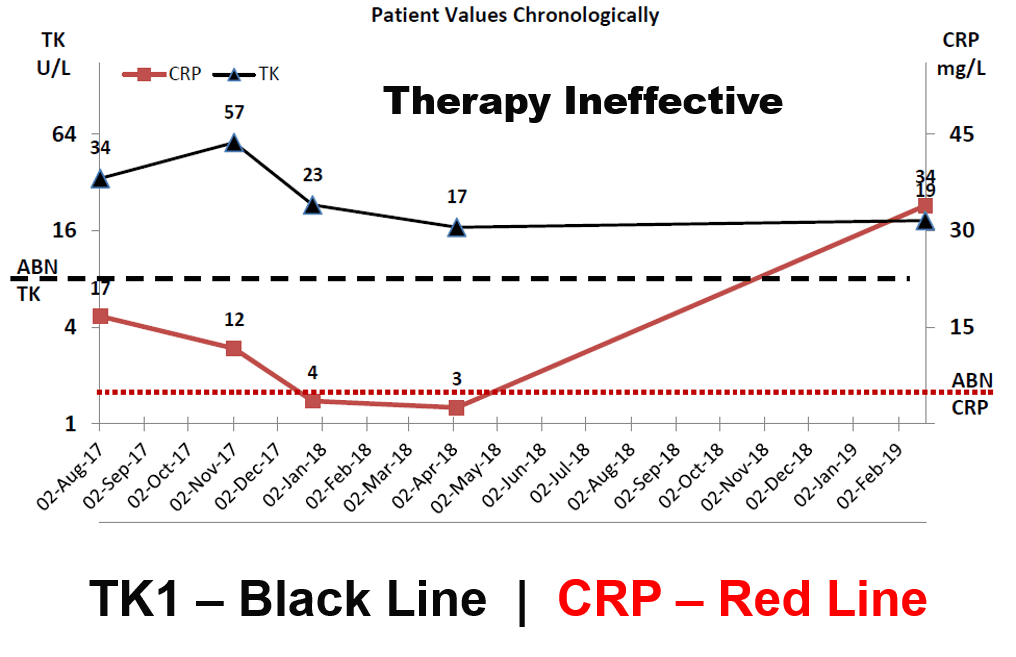
If therapy is ineffective, TK1 will not fully decline. Partial reduction may occur and CRP will initially decline and then rise when tumor processes resume.
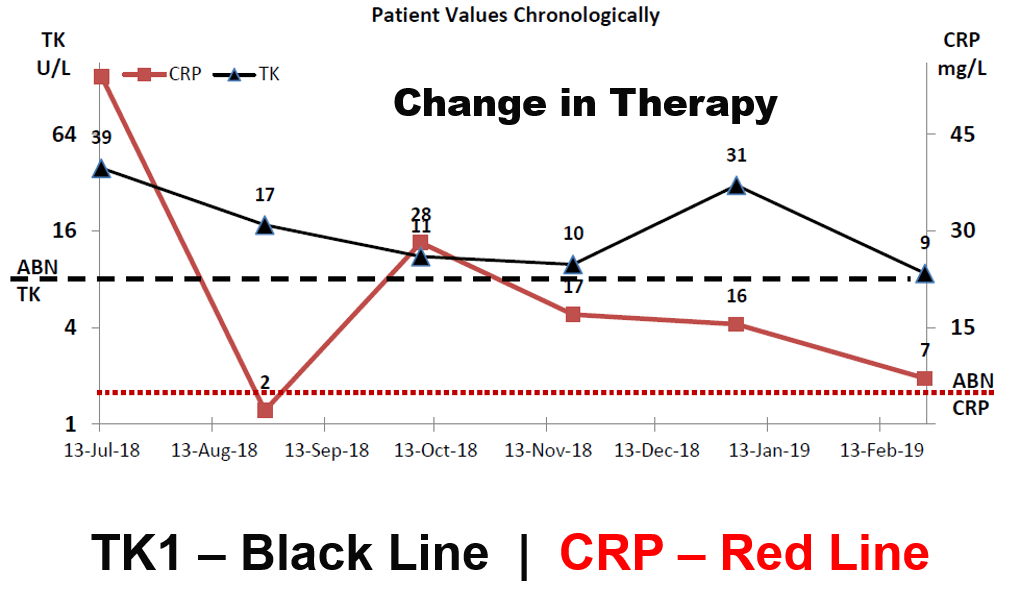
A change in therapy may be warranted when TK1 levels rise. If the new therapy is effective both TK1 and CRP will immediately decline.
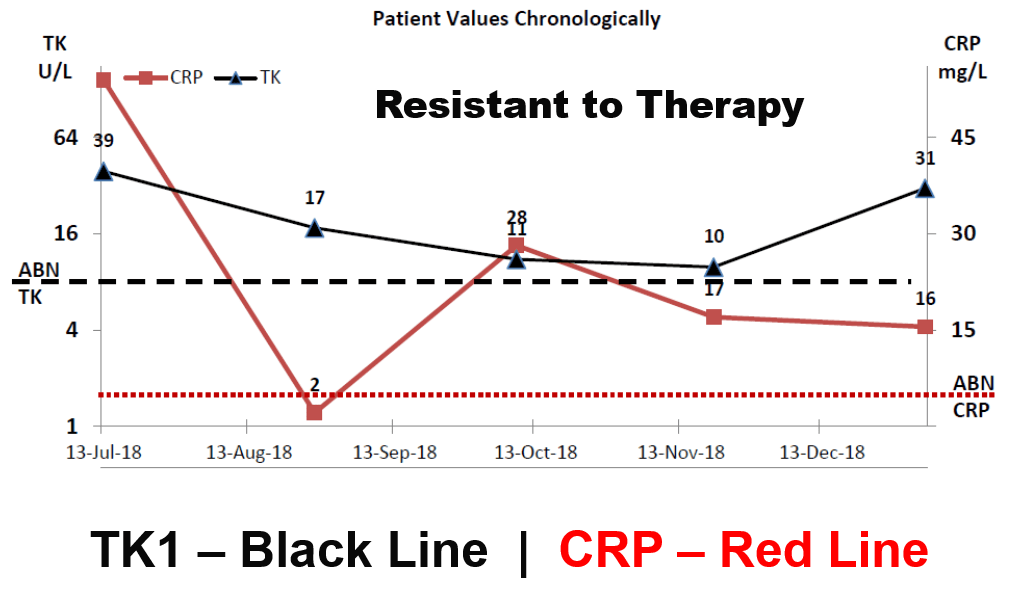
If resistance to therapy occurs, TK1 will not fully decline. Partial reduction may occur and CRP will initially decline and then rise when tumor processes resume.
Disease Recurrence
Changing TK1 and CRP values indicate relapse/metastasis
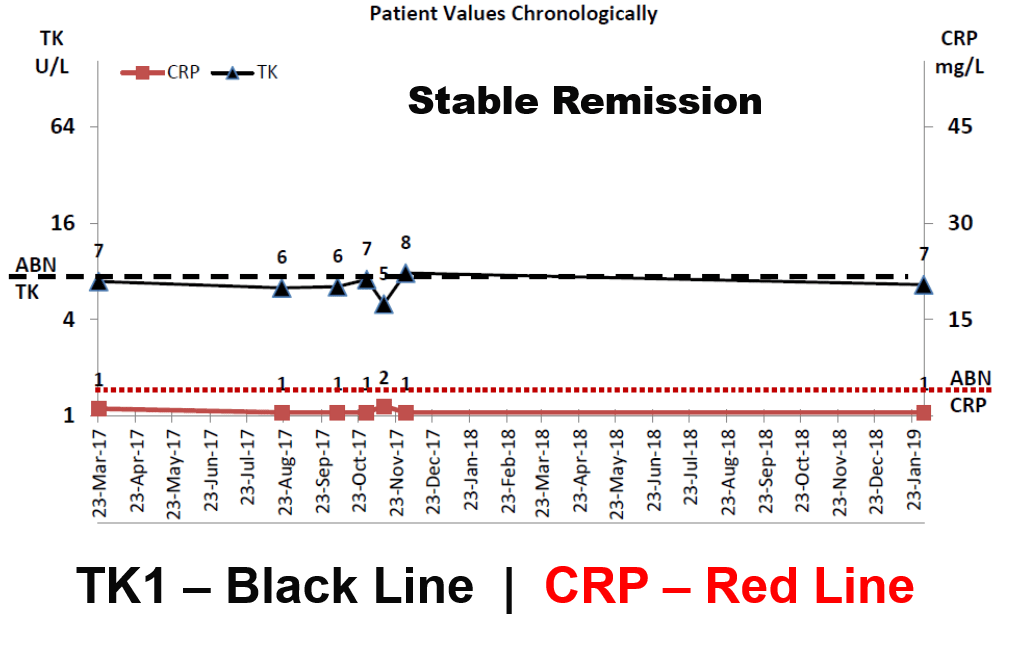
Monitoring patients over months and years ensures that the patient is in stable (complete) remission. Both TK1 and CRP will remain suppressed.
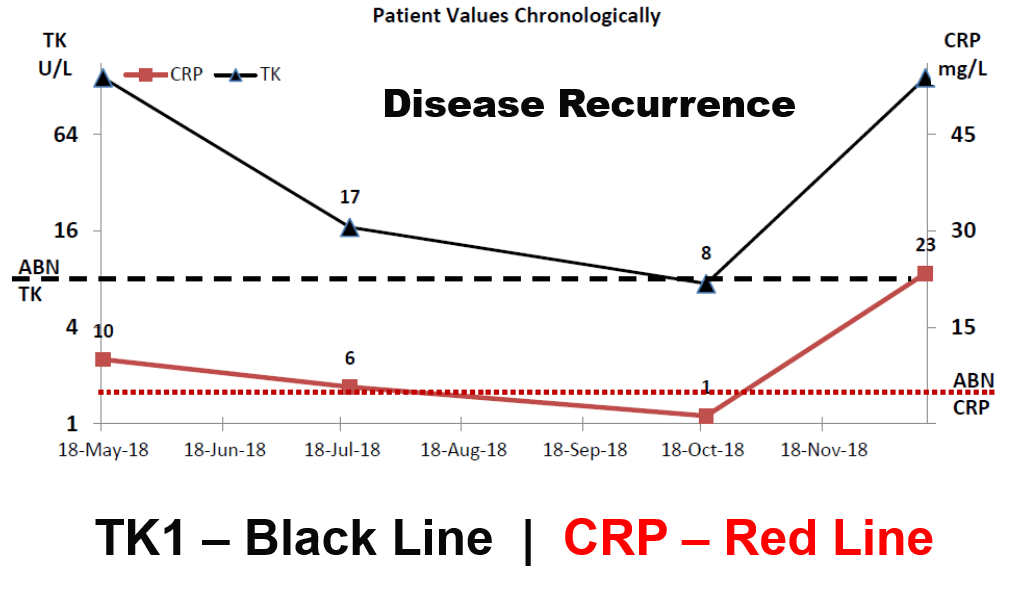
Disease recurrence is documented by the concurrent rise in both TK1 and CRP.
